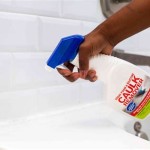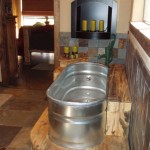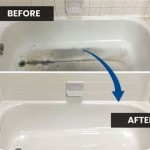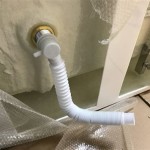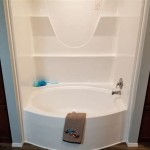How To Fix a Leaky Bathtub Faucet: Delta Shower Cartridge Replacement
A dripping bathtub faucet is more than just an annoyance; it represents a constant waste of water and an unnecessary increase in water bills. Often, the culprit behind this persistent leak is a worn or damaged shower cartridge, particularly in Delta faucets, which are prevalent in many homes. Replacing the cartridge is a common DIY plumbing project, but requires careful attention to detail and the proper tools to avoid further damage. This article provides a step-by-step guide on how to replace a Delta shower cartridge and resolve a leaky bathtub faucet.
Identifying a Delta Shower Cartridge Issue
Before embarking on a cartridge replacement, confirming that the cartridge *is* indeed the source of the leak is crucial. While a dripping faucet is a strong indicator, other factors can contribute to water leakage. Observe the faucet closely. If the dripping is consistent, regardless of handle position, a faulty cartridge is the most probable cause. However, if the dripping only occurs when the shower handle is in a specific position, the issue might be related to the handle mechanism itself or the O-rings around the cartridge stem. Sometimes, mineral buildup around the faucet spout can mimic a leak, so cleaning the area thoroughly before proceeding is a good idea. Furthermore, checking for leaks around the showerhead connection and the faucet escutcheon plate is important to rule out other potential sources of water loss. Only when these other potential causes have been eliminated should the focus shift to replacing the Delta shower cartridge.
Delta faucets, known for their single-handle design, utilize cartridges that control both water flow and temperature. Over time, these cartridges can become worn due to mineral deposits from hard water, corrosion, or general wear and tear. The internal seals within the cartridge degrade, allowing water to bypass the intended pathways, resulting in a persistent drip. Recognizing the symptoms of a failing cartridge early can prevent further damage to the faucet and reduce water wastage. Ignoring a leaky faucet can lead to increased water bills and, in severe cases, damage to the surrounding bathroom fixtures due to constant exposure to moisture.
The type of Delta cartridge will vary depending on the model of the faucet. Identifying the specific model of the faucet before purchasing a replacement cartridge is critical. This information is usually found on the faucet documentation or by searching online using the faucet's appearance. Replacing the cartridge with the incorrect model will result in an improper fit and failure to resolve the leaky faucet issue. Take careful note of the handle style, escutcheon plate, and spout design to accurately identify the faucet model. Delta's website provides resources and diagrams that can assist in this identification process.
Gathering the Necessary Tools and Materials
Successfully replacing a Delta shower cartridge involves having the right tools and materials on hand before starting the project. This ensures a smooth and efficient replacement process. The essential tools include:
- New Delta Shower Cartridge: As mentioned earlier, ensure the replacement cartridge matches the exact model of the faucet. This is perhaps the most critical aspect of the preparation.
- Cartridge Puller Tool: This specialized tool is designed to safely remove stubborn cartridges that have become lodged in the faucet body. While pliers can be used, they often damage the cartridge and make removal more difficult.
- Adjustable Wrench: An adjustable wrench is needed to loosen and tighten the various nuts and connections within the faucet assembly.
- Screwdriver Set: A set of screwdrivers, including both flathead and Phillips head, is essential for removing the handle and escutcheon plate.
- Pliers: Pliers can be useful for gripping small parts and maneuvering in tight spaces.
- Allen Wrench Set: Some Delta faucet models use set screws that require an Allen wrench for removal.
- Clean Rags: Clean rags are important for wiping away excess water and debris during the replacement process.
- White Vinegar or Lime Scale Remover: Mineral buildup can hinder the removal of the old cartridge. Soaking the area with white vinegar or a lime scale remover can help dissolve these deposits.
- Plumber's Grease: Applying a small amount of plumber's grease to the new cartridge's O-rings will facilitate smooth installation and prevent future leaks.
Having all these items readily available will prevent unnecessary delays and ensure a successful cartridge replacement. Before starting, it's advisable to lay down a drop cloth or towel in the bathtub to protect the surface from scratches and to catch any stray parts or water.
Step-by-Step Guide to Replacing the Delta Shower Cartridge
Once the tools and materials are gathered, and the faucet model has been identified, the actual cartridge replacement can begin. Following these steps carefully will ensure a successful outcome:
- Turn Off the Water Supply: The most critical step is to shut off the water supply to the bathtub faucet. Locate the shut-off valves, which are typically found under the sink or in the basement. Turn both the hot and cold water valves clockwise until fully closed. If individual shut-off valves are not accessible, the main water supply to the house must be turned off. After turning off the water, open the bathtub faucet to relieve any remaining pressure in the pipes.
- Remove the Faucet Handle: The method for removing the faucet handle will vary depending on the model. Some handles are secured with a set screw located on the side or underneath the handle. Use an appropriate Allen wrench to loosen the set screw and pull the handle off. Other handles are attached with a screw concealed beneath a decorative cap. Use a small flathead screwdriver to pry off the cap and then unscrew the screw.
- Remove the Escutcheon Plate: The escutcheon plate is the decorative cover that surrounds the faucet valve. It is usually held in place by screws or a threaded connection. Remove any visible screws securing the plate. If the plate is threaded, carefully unscrew it by hand. If the plate is stuck, gently tap around the edges with a rubber mallet to loosen it.
- Remove the Retaining Clip (if applicable): Some Delta faucets have a retaining clip that secures the cartridge in place. This clip is typically located at the front of the cartridge stem. Use a pair of pliers or a small screwdriver to carefully remove the clip. Take note of the clip's orientation for proper reinstallation.
- Remove the Old Cartridge: This is often the most challenging step. If the cartridge is relatively new, it may slide out easily. However, if it has been in place for a long time, mineral buildup can make it difficult to remove. Attempt to grip the cartridge stem with pliers and gently twist and pull. If the cartridge is stuck, use the cartridge puller tool. Follow the tool's instructions to attach it to the cartridge stem. Gradually tighten the tool to extract the cartridge from the faucet body. Avoid using excessive force, as this can damage the faucet body.
- Clean the Faucet Body: Once the old cartridge is removed, inspect the faucet body for any debris or mineral deposits. Use a clean rag and white vinegar or lime scale remover to clean the inside of the faucet body thoroughly. Make sure to remove any residual debris that could interfere with the new cartridge's installation.
- Install the New Cartridge: Before installing the new cartridge, apply a small amount of plumber's grease to the O-rings. This will lubricate the seals and ensure a smooth installation. Align the cartridge with the valve body, paying attention to any markings or notches that indicate proper orientation. Gently push the cartridge into place until it is fully seated.
- Reinstall the Retaining Clip (if applicable): If the faucet uses a retaining clip, reinstall it to secure the new cartridge. Ensure the clip is properly seated in its groove.
- Reinstall the Escutcheon Plate: Replace the escutcheon plate, securing it with the screws or threading it back into place.
- Reinstall the Faucet Handle: Reattach the faucet handle, tightening the set screw or screwing it back onto the stem.
- Turn On the Water Supply: Slowly turn the water supply back on, both hot and cold. Check for any leaks around the faucet handle, escutcheon plate, and spout.
- Test the Faucet: Turn the faucet on and test both the hot and cold water. Verify that the water flow is smooth and that there are no drips.
If leaks persist after following these steps, double-check the cartridge installation and ensure that all connections are tight. If the problem persists, it may be necessary to consult a professional plumber.
Troubleshooting Common Problems
Even with careful execution, certain challenges can arise during the Delta shower cartridge replacement process. Addressing these potential issues proactively helps ensure a successful outcome.
One common problem is the inability to remove the old cartridge. Mineral buildup is a frequent culprit, making the cartridge virtually immovable. In such cases, soaking the cartridge area with white vinegar or a commercial lime scale remover can help dissolve the mineral deposits. Allow the solution to sit for several hours or overnight before attempting to remove the cartridge again. The cartridge puller tool is extremely helpful in removing stubborn cartridges, providing added leverage and reducing the risk of damage.
Another issue is damaging the cartridge during removal. Attempting to force the cartridge out without using the proper tools can lead to breakage. If the cartridge breaks inside the faucet body, extracting the remaining pieces can be challenging. Using a small pick or screwdriver to carefully pry out the broken pieces is essential. Exercise caution to avoid scratching or gouging the faucet body. If the broken piece is deeply embedded, professional assistance may be required.
Sometimes, leaks persist even after installing a new cartridge. This could indicate that the new cartridge is faulty or that there is damage to the faucet body itself. Inspect the faucet body for any cracks or corrosion that could be allowing water to bypass the cartridge. Ensure that the new cartridge is properly seated and that all connections are tight. If the leaks persist, consider replacing the entire faucet assembly.
Finally, difficulty reinstalling the faucet handle or escutcheon plate can occur. This is often due to misalignment or stripped threads. Ensure that the handle and escutcheon plate are properly aligned before attempting to tighten the screws or thread them back into place. Avoid over-tightening, as this can damage the components. If the threads are stripped, consider using a thread repair kit or replacing the affected part.
By anticipating these potential problems and having a plan in place to address them, the process of replacing a Delta shower cartridge can be completed smoothly and efficiently.

How To Replace A Delta Cartridge And Fix Leaky Bathtub Faucet It Tutorials

How To Repair A Delta Tub Shower Valve

How To Fix A Leaky Bathtub Faucet Delta Shower Cartridge L Replace

Delta Shower Faucet Cartridge Replacement 1700 Monitor Leak Repair

Fix A Leaky Delta Single Handle Shower Faucet For Under 2

Delta Shower And Tub Cartridge Replacement What You Need To Know

Shower Faucet Repair Advocate Master Plumbing

Leaks Service Parts Faq Delta Faucet

How To Fix A Leaky Bathtub Faucet In 30 Minutes Diy Tips

How To Fix A Leaking Bathtub Faucet The Home Depot
Related Posts

